
|
 |

|
 |
Keeping the fire - Shereen Saif e-mail: shereen.saif@gmail.com Photo credit: Chithran (Frames) and Ratheesh (Green) October 29, 2023 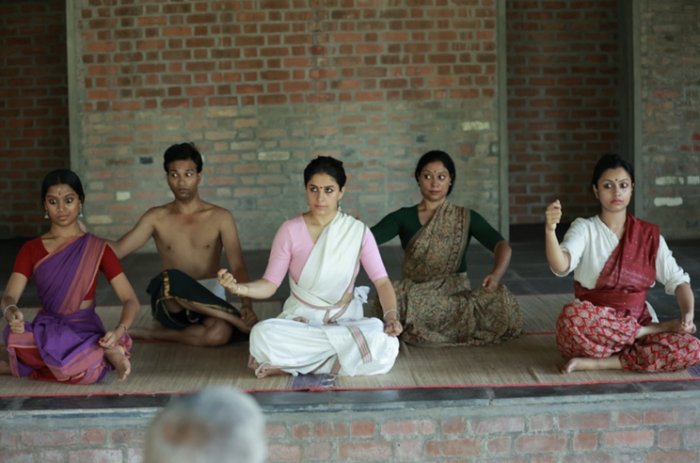 Navarasa Sadhana Phase 4 (October Cohort): Sai Brindha Ramachandran, Natraaj Kumar Anhad, Isha Talwar, Shereen Saif and Chetna Dhyani A seductress, a silly dancer, a teenager insane with grief, a terrified night watchman, an angry fisherwoman, a criminal getting rid of a rotting corpse... While this may sound like the makings of a Netflix thriller, these characters were some of the many that lived through the actors-in-training at the most recent Navarasa Sadhana residency this October at Natanakairali. 5 artistes from Mumbai, Hosur, Delhi and Dubai immersed in Phase 4 of the programme under the watchful eyes of G. Venu, one of India's foremost abhinaya gurus and the mastermind behind Navarasa Sadhana. For a fortnight, the abhinaya kalari came alive with the beat of the kutti mingled with a multitude of emotions. In the evenings, the motley crew descended into town to savour the sights, sounds, smells, tastes and textures. The mind and the five senses on overdrive through the day. Irinjalakkuda has had a sea change since I first visited Natanakairali in 2015. Once a remote temple town, today abuzz with 'nightlife', fast fashion and foodie joints including a place that offers freshly baked Neapolitan style pizza. As I write this piece, a gym close to campus is furiously getting ready to open its doors. Here, tradition and contemporaneity live side by side; as it should. Sometimes a tidy fusion, other times a messy confusion. An example of the former is the fine work that is being carried out by the artiste family at Natanakairali. Kapila has just premiered Inbam, her latest work based on the folk tale of Tamizh hero Madhurai Veeran, told through Inbāthupal - the love poetry from Thirukkural. Even as she stays true to the form of Koodiyattam, she shakes up convention by introducing the Tamizh language and aspects of its culture in what has thus far been solely Sanskrit. Meanwhile her father, Koodiyattam exponent and researcher G. Venu, continues to refine his unique actors' training methodology that although draws from the Natyashastra and living traditions is modelled for contemporary performers. A long journey 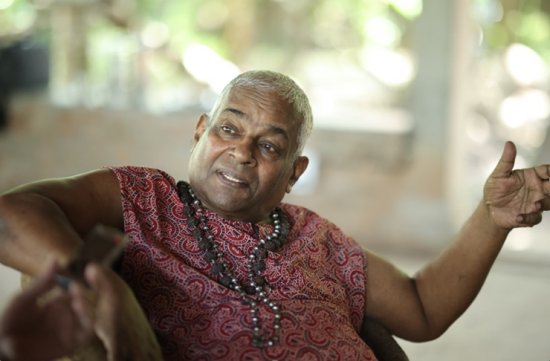 G. Venu The seed for the Navarasa Sadhana was planted in Venuji's mind as student of Koodiyattam when he first came to hear of the actors' secret laboratory at the Kodungalloor Palace. His guru Ammannur Madhava Chakyar, the greatest Koodiyattam performer of the last century, was one of the few selected to train there under Bhagavathar Kunjunni Thampuran. For three generations beginning mid-18th century, actor researchers from the royal family pored over the Natyashastra to develop the navarasa and swaravayu techniques. None of this was ever documented or taught outside the four walls of the palace. Ammannur himself never taught it to Venuji but it sparked a curiosity in him which led to years of independent research on the navarasa till it finally took shape in 1982 as the Navarasa Sadhana. Like the masters before him, he didn't think he would pass on his discoveries, but realizing its "miraculous powers", in 2005 he began working with the students at ITI (Singapore) and then NSD (Delhi). Fast forward 18 years, the Navarasa Sadhana has completed 102 batches and evolved into a comprehensive and practical training spread across 8 phases. Hundreds of performers around the world have benefitted from this training that heightens emotional expression whilst fostering creativity and authenticity. "For 13 years I searched for a wholistic acting methodology. I was looking for a system that would not just teach me tools, because tools don't work, it becomes mechanical. My search for a method and a master has ended with Guruji," enthused actor Isha Talwar who has just completed four phases back-to-back! Why Eight? When quizzed on why Navarasa Sadhana is spread across 8 phases, Venuji's rationale is that each phase is a building block, complete in itself and balancing. "When I evolved the first phase, my concept was that it should be useful to performers even if they don't attend any further phases. It introduces them to the navarasas and netrabhinaya along with the exploration of the most powerful vyabhichari bhava (nirvedam). This itself will bring great change in the actor." Subsequent phases progressively delve into creative eye exercises and its applications, along with varied explorations of bhava and rasa, vyabhichari bhava improvisations and the ardhanareeshwara, a concept introduced in the second phase of the programme. Evoking the masculine and feminine The oldest surviving hint of the ardhanareeshwara concept in performance appears in the Sangam era classic, Cilappatikaram, a Tamil epic poem composed by Ilango Adigal sometime between the 5th and 6th century. In condensed verses, the author describes an exemplary performance of kottichetham, a dance sacred to Shiva, presented by a sakkayan (chakyar) from Parayur for the viewing pleasure of Chera King Senguttavan and his queen. The actor-dancer at once becomes the mighty Shiva and the gentle Uma, one dancing with vigour and the other an ocean of stillness. This ability to transcend gender, express to its fullness the masculine and feminine and shift between the two qualities at will is what Venuji believes to be the ultimate aim of the Indian acting system. "It is with this in mind that I have from the second phase onwards introduced the practice of shringaram with the actor playing both male and female. In the same phase, roudram is explored through the rage of Kannagi. This work on ardhanareeshwara gradually progresses till the eighth phase." From the Gross to the Subtle For most, the Navarasa Sadhana is experienced as a revolutionary practice the first time they are introduced to it. I remember when I did Phase 1 back in 2015, it just blew my mind. The phases that follow take you deeper into the concepts and the practice. Going from the out to in and gross to subtle, Phase 4 to me is all about stretching the imagination and being agile and present in the moment. 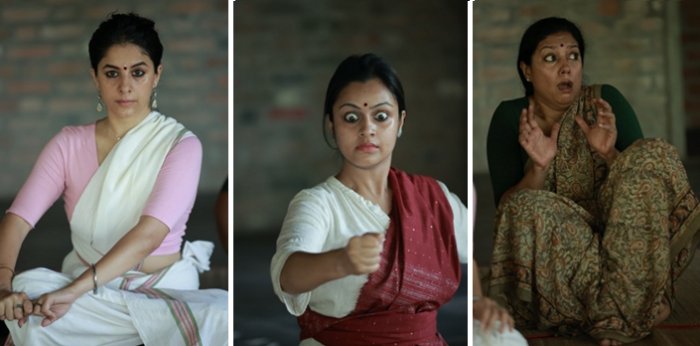 Isha Talwar, Chetna Dhyani and Shereen Saif After practicing the navarasa through physically active modes in phases one to three, four is about going back to how it is taught traditionally - sitting down, except it is not a mechanical practice. Instead, navarasa is evoked through a combination of Natyashastra based eye movements, the breath (swaravayu and mugharaga), the mind (imagination) and five senses. Pleased by this new development, Venuji explains, "The eye movements in the Natyashastra are not practiced anywhere in India because many feel that it is not practical to use in their concept of acting. However, I have found that brahmanam, chalanam, valanam and so on fits perfectly well for the navarasa." Isha is particularly thrilled by the practicality of this seated practice, "moving from the macro to the micro is very exciting because it means that am not limited. I can now practice this on a shooting set, in a vanity...anywhere." Phase 4 is also very actor led. Sthayi bhava is explored exclusively through improvisation, giving the actor immense freedom and agency. "I've become very comfortable with improvisation and emoting without instructions. I don't have to think much and don't experience any kind of blockage because it was removed in the previous few phases. I feel very free and at the same time very controlled in my acting," said Mumbai based Kathak and Manipuri dancer and actor Chetna Dhyani. Being comfortably uncomfortable "Art should comfort the disturbed and disturb the comfortable", said Mexican activist and academic Ceasar A. Cruz. Of course, he was primarily interested in the role that art plays in comforting the vulnerable and creating a sense of solidarity among humans. What excites me however, is how we can fuel our art practice by living in the duality of comfort and discomfort. Natraaj Kumar Anhad, an actor based between Delhi and Mumbai, talks about how "uncomfortable emotional zones" are an actor's goldmine. Thinking back to his improvisation for jugupsa where his character was reacting to a paedophile's touch, he said, "I used to plan things. Now I go in with an idea and see where it can take me. Today in jugupsa, I was so disgusted that I felt like stripping off my skin. I didn't think I would react in such an extreme manner." As someone who started his journey in Navarasa Saadhana in 2017 with an Inlakhs scholarship, he also feels that the connections between eye, mind and breath are so much more apparent for him now.  Natraaj Kumar Anhad Little epiphanies While phase one is about phenomenal leaps, phase four is all about little discoveries. The aha moment for Isha came during her improvisation of hasa, the sthayi bhava of hasyam. As someone who has always felt "really tight" about doing comedy, burdened with the pressure of making people laugh, she was amazed by how liberated she felt, "I had a vague idea that for hasa I would dance. But suddenly I saw a broom and used that as part of my improv. Earlier I would be scared to do something like that. I was so astonished when I picked up that prop without thinking and started to move. When the training starts to surprise you as an actor, that's when you realize that it's really good training." For Hosur based Bharatanatyam artist Sai Brindha Ramachandran, a disciple of Guru Indira Kadambi, it was the discovery of using internalized voice as a tool to bring out richness in emotion. "As a dancer, I don't use voice in my work so when I had to roar in roudram, it was difficult. I also wondered how this would be useful for me. But later I understood that the same sound can be used as an inner voice when I dance Narasimha. That is when it began to make sense to me," said the youngest in the cohort who started her journey in Navarasa Sadhana when she was 17. 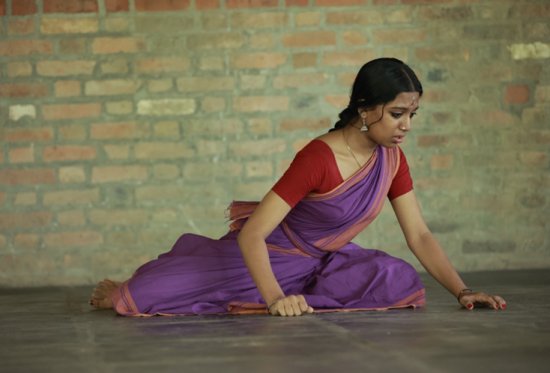 Sai Brindha Ramachandran exploring shokam Time to pause Phase 4 marks the close of part one of the Navarasa Sadhana. Although Venuji has an outline for phases five to eight, focused on developing the masculine and feminine aspects of acting using parvathi viraham as a model, he feels it will take more time and research to develop. Eager as we are for phase five, for now, there is enough fuel to keep the fire burning. 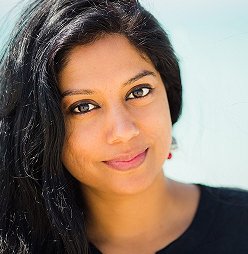 Shereen Saif is a multi-disciplinary artist and writer based between Bangalore and Dubai. Her practice spans theatre, storytelling, voice acting, dance and conceptual art. She is a Mohiniyattam disciple of Dr.Neena Prasad and pursues her training in Indian theatre techniques under veteran Kutiyattam exponent, abhinaya guru and research scholar G. Venu. shereensaif.com / @shereensaifme Response * Lovely article. Thank you. So much to learn, so much to explore... - Lavanya Prassd.(Nov 9, 2023) Post your comments Pl provide your name and email id along with your comment. All appropriate comments posted with name & email id in the blog will also be featured in the site. |